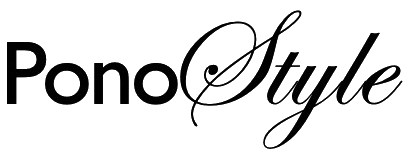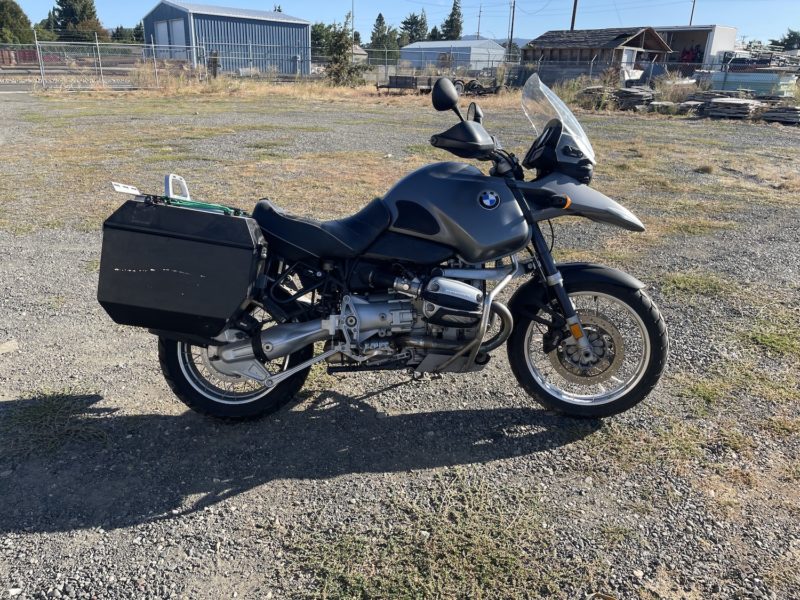This bike is ready to ride around the world. I bought this bike on Bring-A-Trailer because I wanted a bike capable of going anywhere. BMW has been making adventure bikes a long time, my friends have them, I didn’t, and I could easily see they were having fun that I couldn’t quite share. It’s not that I don’t have motorcycles–I have lots of them. I have touring bikes capable of covering 600+ miles a day in style and comfort, and I have dirt bikes that can roam fireroads, carve across the desert, or follow a BDR route. I just didn’t have a bike that could do both. So I bought this and started doing a few modifications to make it ideal for what I wanted to do. And then I bought a KTM 390 for shorter, more dirt-intense trips. And then a 1990 BMS R 100 GS in Paris-Dakar livery came up for sale. I’ve been wanting one of these for 30 years. And suddenly my 2002 1150 GS was surplus to my needs.
So it’s one of the bikes on the auction block, though I never really got a chance to ride it much. It’s a pretty thing, in a brutal, purposeful way.

There’s a scratch on the pannier. These massive, solidly secured panniers are aluminum with what looks like rattlecan paint on them. Easy to touch up or repaint. Or if you’re extremely ambitious and bored–strip them and polish them.
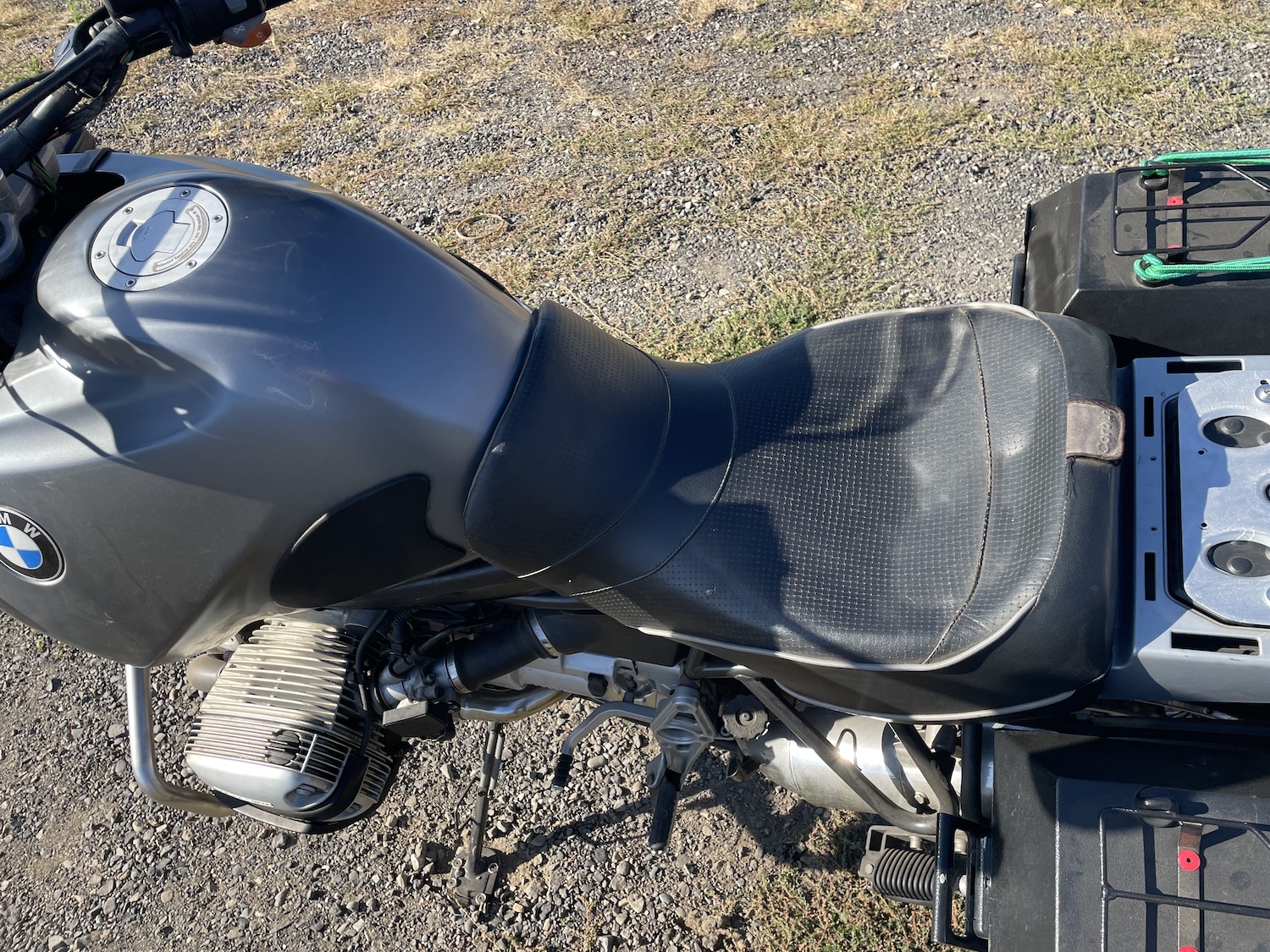
The Corbin seat is lovely and as comfortable as a favorite chair, the flap covers a fitting for a backrest, which is included

This bike has covered a shade over 50,000 miles. That’s break-in mileage for these bike. These things are built for serious distance.

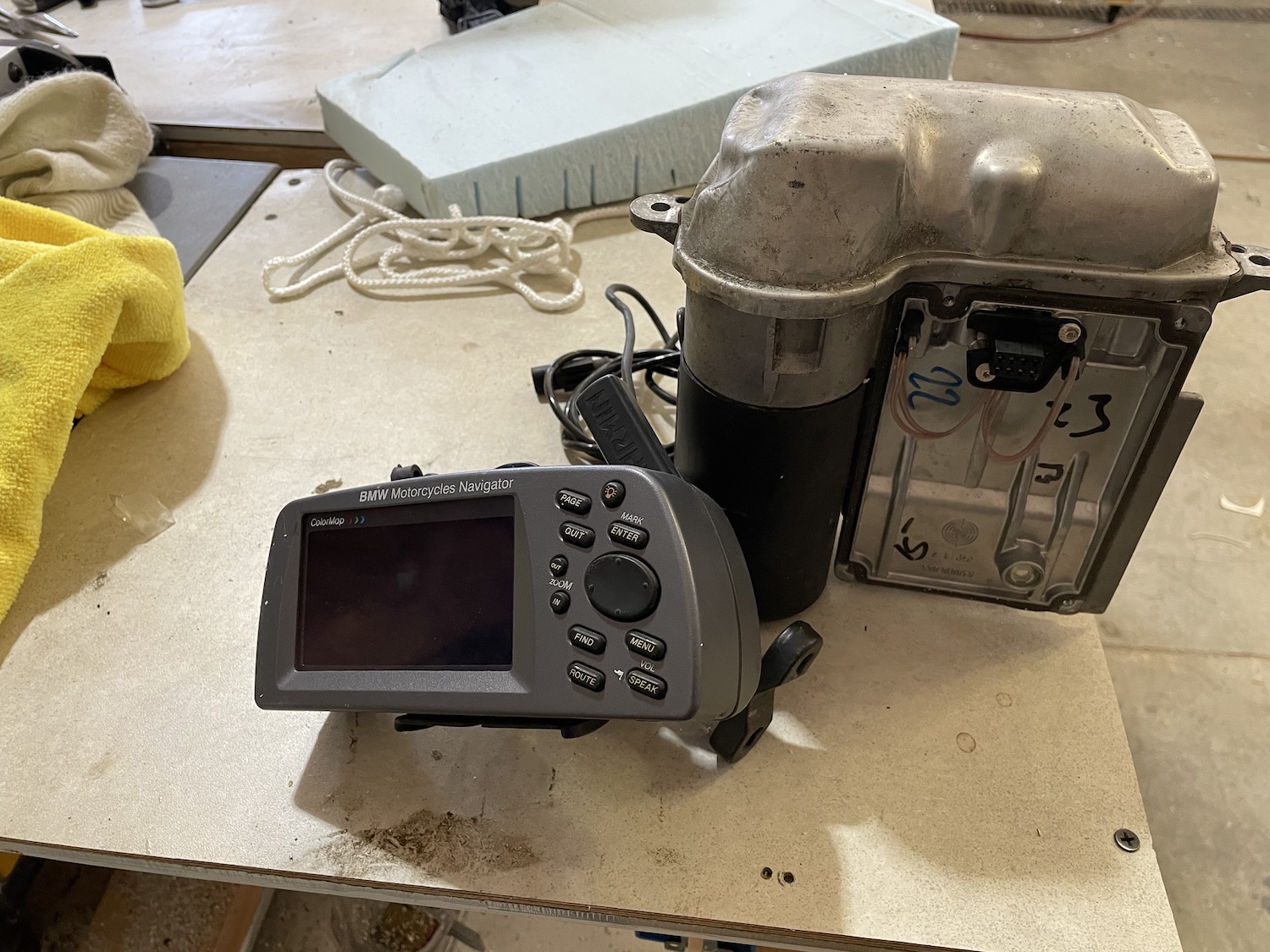
I removed the ABS system from the bike. These have a reputation for going bad and leaving the rider with marginal brakes. Bypassing and removing the ABS is a very common reliability and weight-reduction modification for this bike. I did it in a manner that is easily reversible, with no modifications to the wiring. I made a waterproof housing for the logic board which is still in the bike. This eliminates the need for changing the brake light switch and modifying the wiring harness. In the unlikely event someone wanted the ABS back they simply connect and attach the logic board to the unit, replace the hardlines that divert brake fluid to the ABS, and done. I’m comfortable with having the full power of the braking system under my full control–just like all my other non-ABS bikes. I also removed the accessory GPS unit. Compared to modern units, or even smartphones it seems clumsy and complex to use. It works fine, if the buyer wants it, it just needs to be remounted and connected to power.

Since I didn’t expect to carry a passenger (my wife is not a fan of motorcycles) I removed the pillion seat and fabricated a rear bag rack on top of the toolbox cover. My intention was to remove the grab handle and have on continuous rack capable of carrying a large multi-day camping load. The grab handle is held on by a few screws if the new owner wants the full rack, or my cover is held on with four screws if they want the passenger seat. 
Of course it has a toolbox, it’s a BMW. When I was a BMW motorcycle mechanic in the 70’s we would use the toolbox tools for most work–they are excellent quality and fit well. 
Oops, pardon the thumb. As befits a long haul traveler the bike has a kit of items to fix flats and reinflate tires (both a miniature compressor and CO2 bottles). There’s also a battery tender included and the battery cable is in place, under the seat. 
The previous owner fitted some hardware store hasps and padlocks to lock the panniers when the locks built into the panniers stopped working. I removed the hasps, and plugged the holes with aluminum rivets. There are four new locks in the accessories bag.

The panniers have internal carry bags, and the pannier tops have retainers for carrying small items like shaving kits or food bags. You simply squeeze the inside of the hourglass shape to release the retainer. The tops of the panniers have light racks that were installed with small bolts. I replaced the bolts with stronger, less rattle-y aluminum rivets. I backed all the rivets with stainless steel washers.

The bike includes a large assortment of accessories, a backrest, two tank bags, two bags that attach to the crash bars for easy access. Stock, custom, and Corbin seats, two large windshields, various parts including handlebar risers, replacement locks for the panniers, and various hardware.

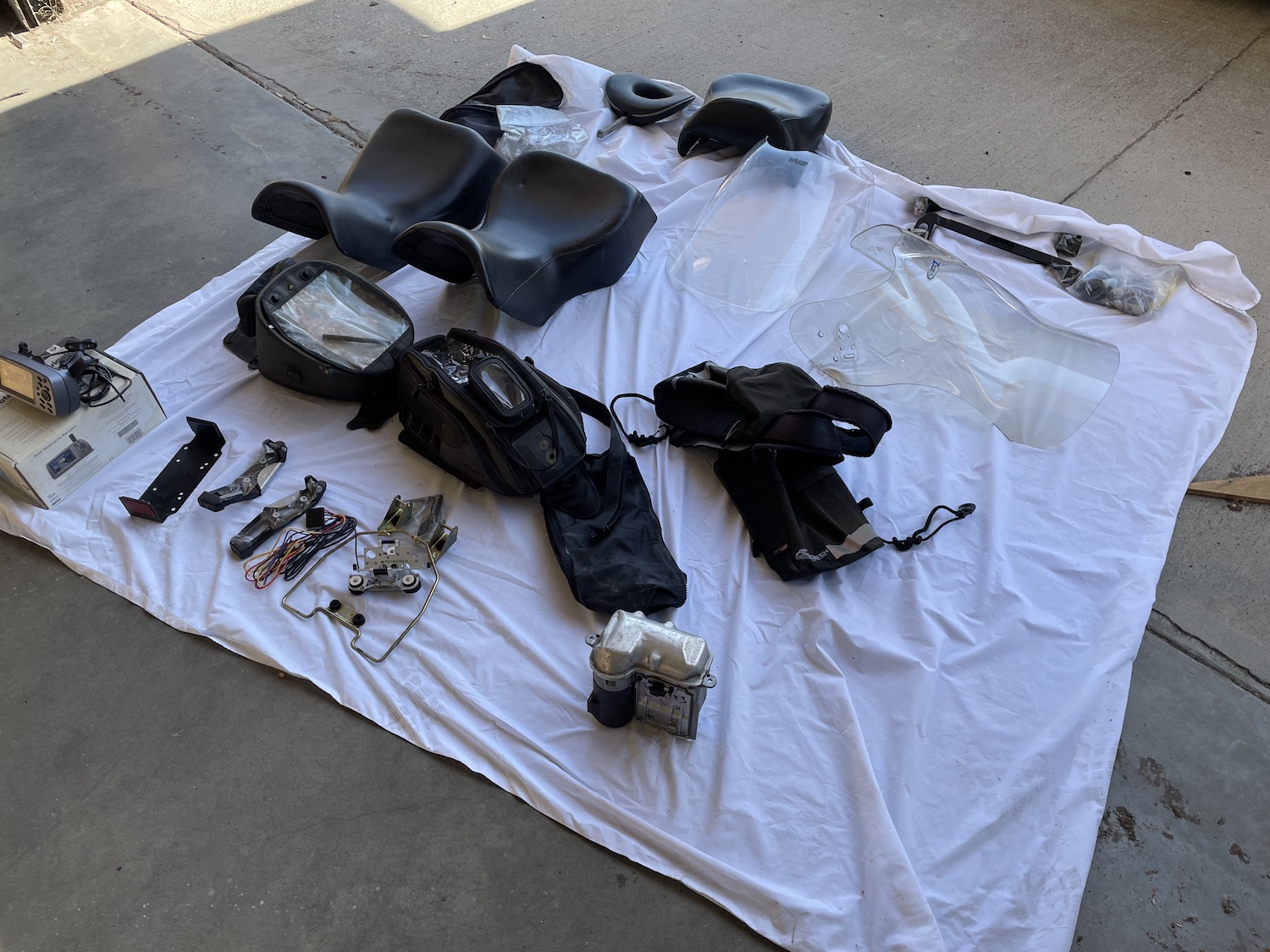
These are larger windshields for long-distance riding or inclement weather. They adjust to the rider’s desired angle the same as the stock screen does. When I first received the bike the larger of these screens was installed. I put the small stock screen on because I like the way it looks and it handles high crosswinds that are common in Hood River.

Here’s the bike with the panniers removed. The oil dry on the floor is for leaks from my Triumph-powered race car.

There are no scratches or dings on the tank, just the usual scrubbing wear from tanks bags and the like. The pipes and crash bars show expected age and travel-related discoloration.

The seat is one of the best I’ve sat on in nearly 60 years of riding motorcycles. The dimple on the exhaust is not accidental, it’s heel clearance.
